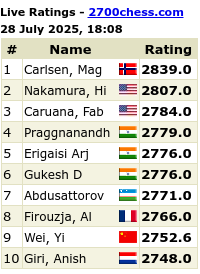- The collection of games and positions was HIGHLY unoriginal. In fact, in 247 pages, there were only FIVE games that I had not seen previously.
- The book in general consists of a series of vague generalities. For example, on page 99, the authors pose all of the following incredibly interesting questions, "When should the attack involve pawns, and when should it be led without them? Can we determine the proper role of pawns in an attack with kings castled on the same side? Is there a strategic basis for determining correct attacking methods?" Their reply to all of these questions -- and I am quoting IN FULL here -- "The character of an attack is determined by the nature of the position." They even italicize this sentence for emphasis; apparently they think this is some brilliant insight. Duh! Very helpful, thanks.
- Comments are still ridiculously scarce for many of the games. Concrete variations are even more scarce. Several of the games lack even ONE variation or alternative move.
- Analysis is always superficial, and sometimes incorrect. For example, in Alekhine-Asztalos, Kecskemet 1927, we are told "42.Nxf7! 1-0 (42....Qxf7 43.Bd3+ Qg6 44.Qf8!)." Well, that evaluation appears to have been uncritically copied from Alekhine's Best Games book. But in fact, this analysis is incorrect. Chess Life (May 1993) showed that the correct move is 42.Nf3! and 42.Nxf7 merits a ? not a !.
- In some cases essential analysis is missing altogether. One of the most debated moves in chess (17....Rxf2 in Bird-Morphy, London 1858) is given a !? without comment or analysis.
- Commentary when provided is as vague as the rest of the writing. Page 128 rambles on for three paragraphs about the position after White's 28th move in the game Euwe-Keres (World Championship Tournament Round 1, The Hague 1948). The three paragraphs contain absolutely nothing of value. The three questions to take away from the position are: who stands better? (Black) why? (The square e4 is weak, Black can quickly mass all his pieces for an attack, and the White queen is out of play on c4) what should he do about it? (improve the position of his pieces to go on the attack). The authors attempt to answer only the third question and don't answer even that one particularly clearly.
Conclusion: Stay away. You will learn very little from this book.

No comments:
Post a Comment